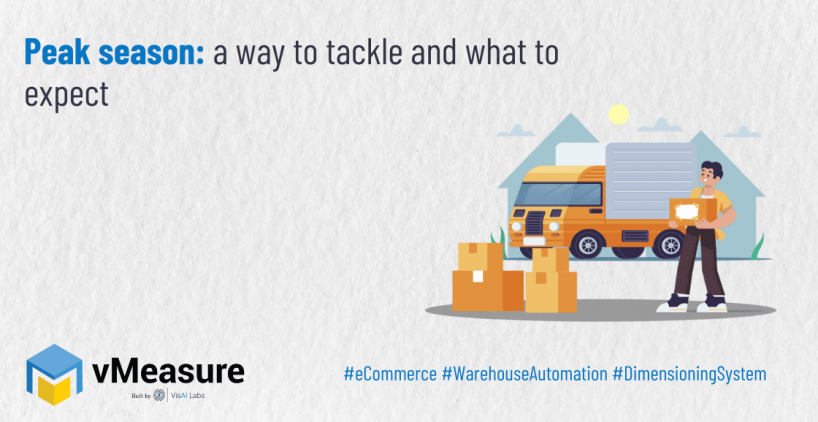How to handle Peak Season
Summary
Every year for a certain couple of months, several eCommerce brands accept an outpouring of online orders and product demands – Peak seasons (Holiday months).
These peak seasons are paramount for direct-to-consumer brands as it is a great time to multiply sales and boost profit. So, without a doubt, several eCommerce brands would strive hard to entice customers with various marketing strategies – high discounts, free or same-day shipping, and many more.
Read this blog post to discover more about peak season, what to expect, and how to deal with it.
Introduction
The winter has begun, and so has the peak season. Several eCommerce firms would excitedly open their doors for peak season because it is a critical time of year when consumers spend like crazy due to the existence of several major festival days during this timeframe. On the other hand, the peak seasons are the most crucial year for eCommerce firms as they face various struggles to deliver products to the customers’ doorstep at a promised time, but that hasn’t been achieved that easily. As the peak season approaches, product demand increases, resulting in less availability, which could be a major concern for eCommerce entrepreneurs.
What is the best way to deal with peak season?
The most important aspect of eCommerce for many people is finishing tasks on time. The finest strategies for easing the peak season are listed here to aid your preparation.
Plan wisely:
Every strategy needs a detailed data record. To get ready for the future, you should have a comprehensive set of data that includes a tonne of product information, such as best-selling items, stocking up on new products based on demand forecasting, being aware of dead stock, optimizing the movement of fast-moving items, planning a flash sale to create buzz among customers for the best results, enabling the stock availability tracker, and many more.
Fine-tune your working process with the latest technologies:
When it comes to optimizing the working process, using the most recent technology is always a wise decision. Imagine, for instance, that you receive sizable order requests every day. When you pack, you must calibrate each parcel’s dimensions and weight, which can be tedious and time-consuming. Moreover, the identical operation would be extremely difficult for the warehouse associate to do differently. As a result, there may be a greater tendency for dimensional errors leading to pricey return charges in specific circumstances.
The warehouses can easily implement dimensioning weighing scanning systems to calibrate the dimensional and weight information of various shapes of shipments to get around this obstacle. Another option to capture and use parcel-centric information for tracking product movement is to integrate this dimensioning weighing scanning equipment with WMS systems.
Workforce planning:
Low labor resources are a recipe for failure in a warehouse. In essence, you must ensure that labor is available, especially during the busiest times. However, other businesses would recruit seasonal workers to start the fulfillment process as soon as possible. As a result, if you intend to hire additional workers, you should think about the following:
- The number of workers you are about to hire
- Your available budget for hiring other workers
- Enough time is required to train workers properly.
Space planning:
It is obvious that the busiest times of the year would be challenging. However, to make room for expanding your product inventory, you must make space. To do that, you need the appropriate inventory to keep track of stock levels, which would be more instrumental in arranging space and allowing for higher space rents. On the other hand, implementing dimensioning weighing scanning systems would once more beneficial in computing parcel information, which aids in estimating the precise quantity of space to keep goods internally.
Managing timelines:
Almost every industry has a peak period when sales of goods or services soar at certain points during the year. This sharp increase in demand may be advantageous for those who are well-prepared or devastating for retailers who are unable to adapt. However, it’s challenging to handle the difficulties of peak sales periods. Most of the time, businesses face many challenges, including acquiring more merchandise, finding temporary storage space, finishing equipment modifications, and hiring more staff. So, managing timelines would be the prior requirement to conquer peak season spikes.
Suppliers and customers communication:
Customers today expect to be kept informed of any delays or problems with their purchases. Keep your customers posted when they anticipate receiving their products because delays cannot always be prevented. Businesses must meet order and delivery deadlines to entice new customers and to keep the existing ones during the peak shipping season. You should always notify your clients of such deadlines. Furthermore, inventory levels are always changing. To avoid backorders, make it a point to disclose when an item is out of stock on your website.
Conclusion:
Peak shipping season is difficult. However, it is also a chance for your company to gain the trust of its clients and establish connections that can deliver long-term benefits. During the peak shipping season, every operation strives to operate well. You will be better prepared to deal with peak shipping season if you prepare your workforce and implement the necessary technologies like dimensioning weighing scanning systems, which would be more beneficial during the calibration of dims and weight information of the parcels.
If quickly dimensioning all sizes of parcels is your top priority, then take a look at vMeasure Parcel Ultima – dimensioning weighing scanning solution. The one-stop dimensioning solution for all of your dimensioning-related problems. For further information, click the link.
